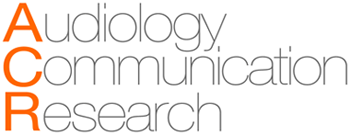ABSTRACT
Purpose
To determine risk indicators for hearing loss affecting different evaluation steps of a universal newborn hearing screening program.
Methods
Longitudinal, retrospective study of newborn hearing screening in a tertiary public hospital, including 832 newborns born between January and December 2012. Transient evoked otoacoustic emissions were measured at the first hearing evaluation in all newborns and retested in cases of “failure”. When a “failure” result persisted, auditory brainstem responses (ABR) was performed. All newborns with risk indicator for hearing loss were evaluated with ABR screening regardless of the outcome of the otoacoustic emissions test.
Results
The presence of at least one risk indicator for hearing loss, associated or not with craniofacial malformations, genetic syndromes and birth weight below 1500 g significantly increased the chances of “failure” in the otoacoustic emissions test. Meningitis and craniofacial malformations significantly increased the odds of an abnormal ABR. Two newborns with normal otoacoustic emissions were diagnosed with auditory neuropathy.
Conclusion
Craniofacial malformation was an indicator strongly associated with a diagnosis of deafness, regardless of the hearing screening being performed by otoacoustic emissions or ABR at different steps of a universal newborn hearing screening program. This finding justifies continuous and systematic monitoring of the screening service seeking quality improvement of the newborn health hearing program.
Neonatal screening; Risk index; Hearing; Electrophysiology; Infant; Newborn

 Subtitlte: BW = birth weight; ICU = Intensive Care; MV = mechanical ventilation; HL = hearing loss
Subtitlte: BW = birth weight; ICU = Intensive Care; MV = mechanical ventilation; HL = hearing loss
 Subtitle: OAEs = Otoacoustic emissions; ABR = Auditory brainstem responses
Subtitle: OAEs = Otoacoustic emissions; ABR = Auditory brainstem responses